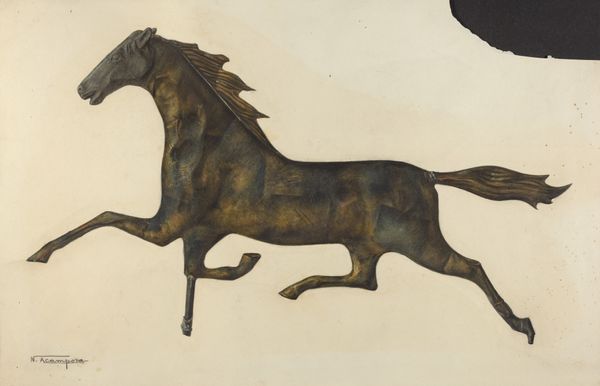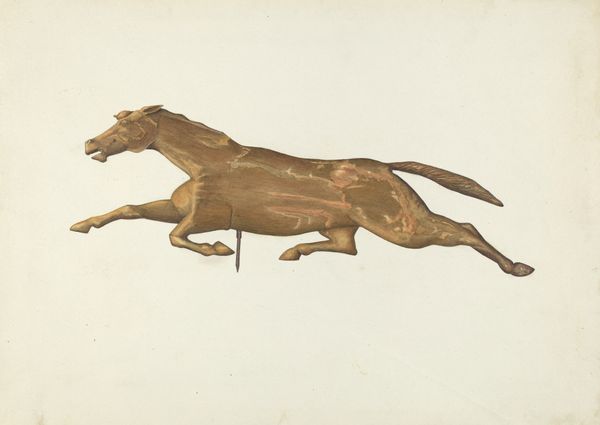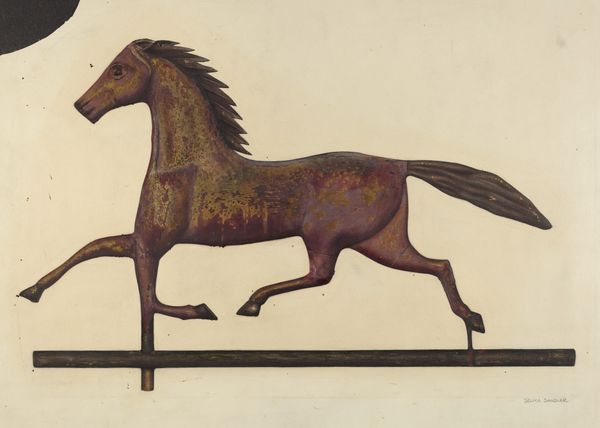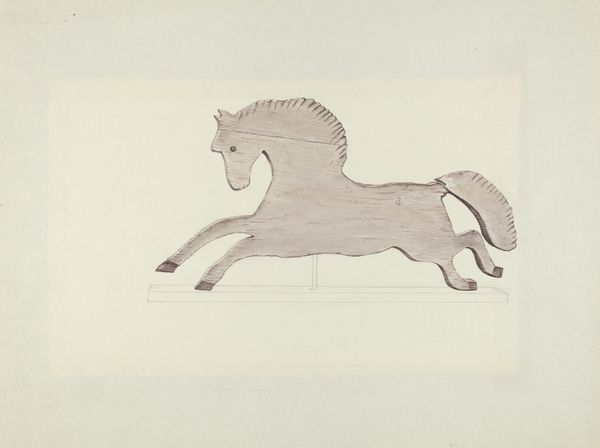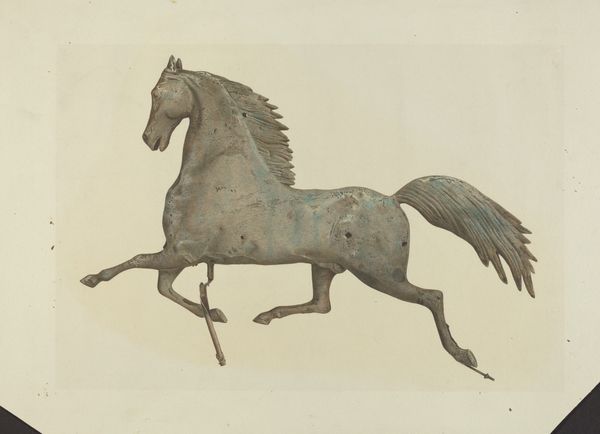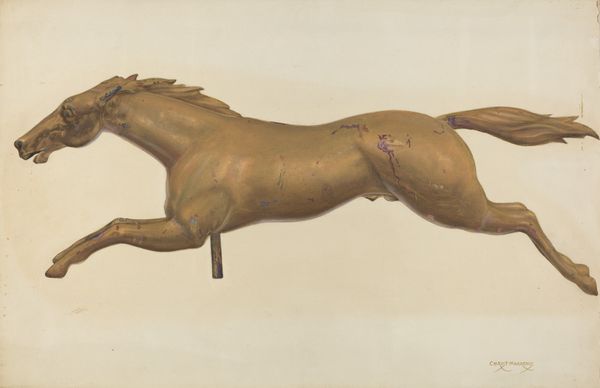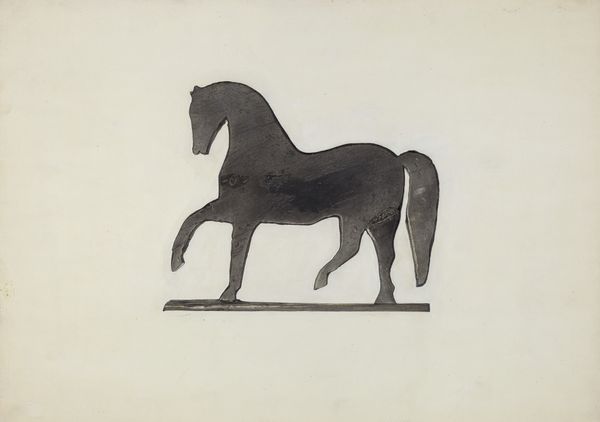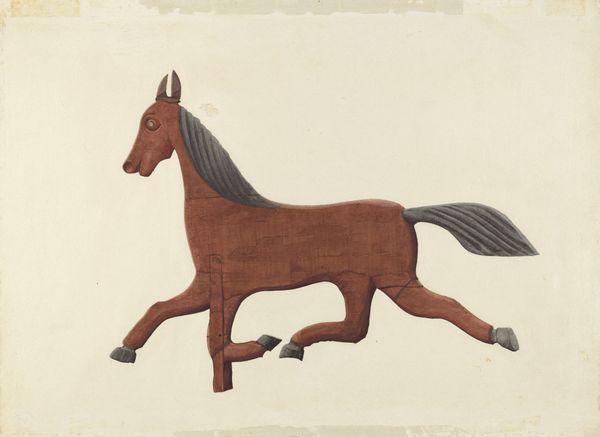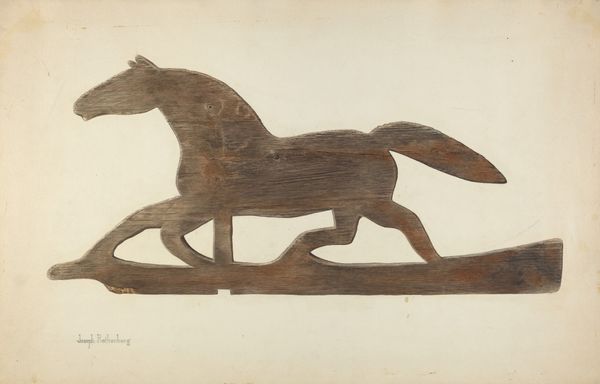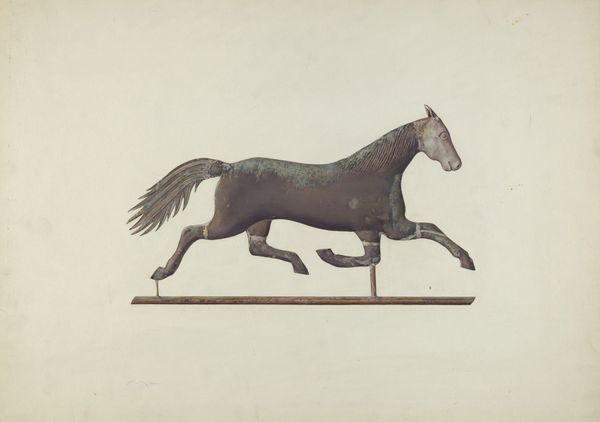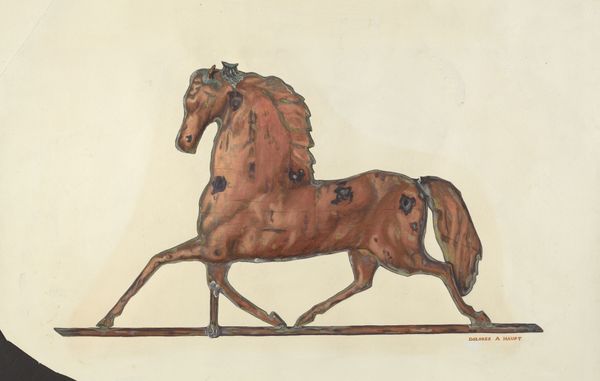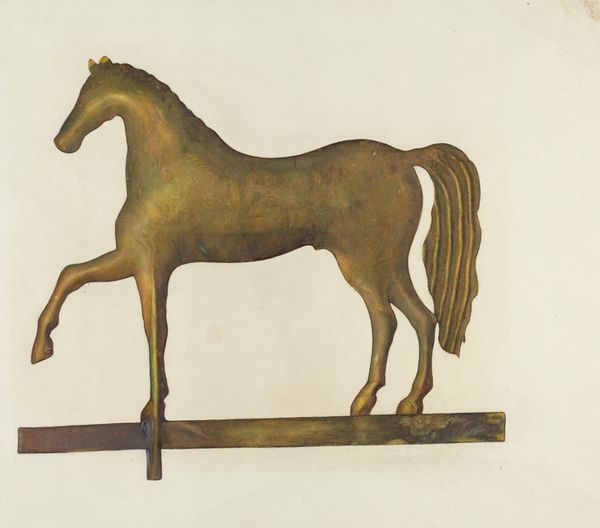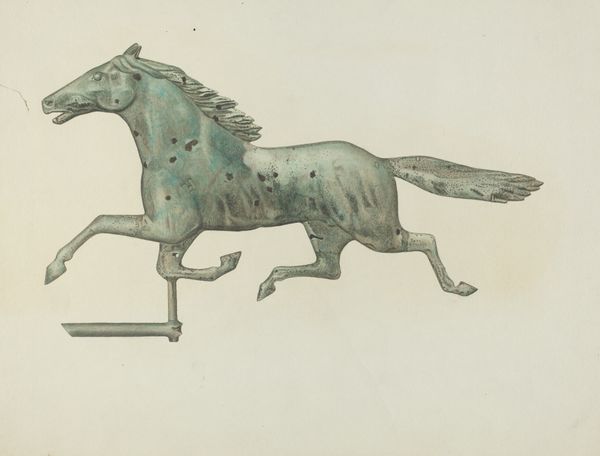
drawing, watercolor, pencil
#
drawing
#
landscape
#
charcoal drawing
#
figuration
#
watercolor
#
pencil drawing
#
pencil
#
watercolour illustration
#
realism
Dimensions: overall: 29.9 x 42.5 cm (11 3/4 x 16 3/4 in.) Original IAD Object: 61" long
Copyright: National Gallery of Art: CC0 1.0
Editor: This is Alfred H. Smith's "Wooden Horse Weather Vane," from around 1940, rendered in pencil and watercolor. It has such a handcrafted feel. What story does this work tell in terms of its materials and how it was produced? Curator: Well, at first glance, we see a charming representation of a horse, but when we consider the title "Wooden Horse Weather Vane" we need to really look into the materials used. We should think about the labor involved in potentially depicting something like folk art or a handcrafted weather vane. What were these objects, weather vanes, and this art typically made from? Who was making them, and where? The choice to depict such an object in watercolor and pencil on paper asks a lot of questions about the class and work relationship between the artisan and artist. Editor: That’s fascinating! It feels like more than just a picture; it's almost like a document of a craft. So, does the medium – watercolor and pencil – tell us something about Smith's intent here? Curator: Exactly. These materials are easily accessible. This allows an artistic eye to document this form and elevates a traditional craft by reinterpreting the design through a new medium. Think about how Smith might be commenting on mass production versus the unique artistry of a hand-carved weather vane. What does it mean to replicate the image versus the object? Editor: So, it’s less about the horse itself, and more about how its image embodies this intersection of art, craft, and production methods? Curator: Precisely. The simplicity of the rendering paired with the directness of the title throws the viewer into questioning all of those dynamics at play between the original craftsman's output, Smith's rendering of this, and our perception and expectation as we experience these. Editor: That makes me appreciate it in a completely new way! I went in thinking about subject, but now I’m thinking about art's ability to preserve craft and question production. Curator: Yes! And consider how mass production of such similar objects have evolved to where they are today and how works like this have captured their essence at the right time.
Comments
No comments
Be the first to comment and join the conversation on the ultimate creative platform.
